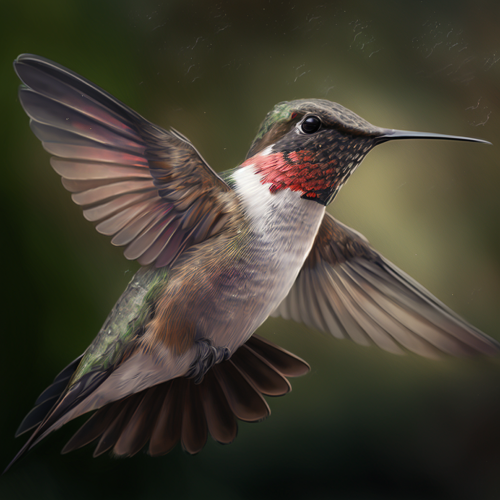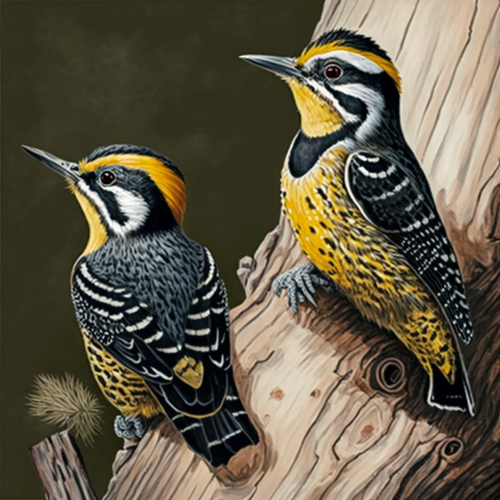DLTK's Crafts for Kids
World Migratory Bird Day
 World Migratory Bird Day is an annual event organized by the United Nations, celebrated on the second Saturday of May and October, that highlights the remarkable journeys of migratory birds and raises awareness about the need for their conservation. Migratory birds travel vast distances across the globe, connecting continents and cultures. These incredible journeys inspire wonder and admiration, and on World Migratory Bird Day, we come together to celebrate these fascinating creatures and learn more about the importance of protecting their habitats.
World Migratory Bird Day is an annual event organized by the United Nations, celebrated on the second Saturday of May and October, that highlights the remarkable journeys of migratory birds and raises awareness about the need for their conservation. Migratory birds travel vast distances across the globe, connecting continents and cultures. These incredible journeys inspire wonder and admiration, and on World Migratory Bird Day, we come together to celebrate these fascinating creatures and learn more about the importance of protecting their habitats.
About World Migratory Bird Day:
Established in 2006, World Migratory Bird Day aims to raise awareness about the threats migratory birds face during their long journeys and to promote international cooperation in conserving their habitats. The day is observed with various events and activities, such as birdwatching, educational programs, and community gatherings, which help people better understand and appreciate the importance of these birds and their unique migratory patterns.
Through various events, educational programs, and online initiatives, people of all ages can learn about the captivating world of migratory birds. Here at DLTK's Crafts for Kids, we're proud to be a part of this global celebration, providing creative and educational resources for you and your children to enjoy.
Some Common Migratory Birds:
-
 Ducks:
Ducks:
Many species of ducks, such as the Mallard, Northern Pintail, and Green-winged Teal, undertake impressive migrations. Ducks generally migrate in large groups called flocks, flying at altitudes of up to 20,000 feet. They often travel between their breeding grounds in northern regions and their wintering grounds in the southern United States, Central America, or even South America. Ducks usually migrate at night, using the stars for navigation, and can cover hundreds of miles in a single night. -
 Geese:
Geese:
Geese, such as the Canada Goose and Snow Goose, are well-known for their long-distance migrations. They migrate in a distinctive V-shaped formation, which helps them conserve energy by taking advantage of the air currents created by the birds in front. Geese are known to migrate up to 3,000 miles each way between their breeding and wintering grounds, often flying at altitudes of 8,000 feet or more. They primarily migrate during the day, using landmarks like rivers and mountain ranges to navigate.  Hummingbirds:
Hummingbirds:
Many species of hummingbirds migrate. These tiny birds undertake impressive long-distance migrations between their breeding and wintering grounds. One of the most well-known migratory hummingbirds is the Ruby-throated Hummingbird, which breeds in North America and migrates to Central America for the winter. This species can travel up to 3,000 miles during its migration, with some individuals even flying non-stop for 18-22 hours across the Gulf of Mexico, covering around 500 miles in a single flight.
Hummingbirds rely on an abundance of nectar-rich flowers to fuel their migration, and they have exceptional memories that allow them to remember the locations of food sources along their route. They generally migrate alone, rather than in flocks like many other bird species, and can adjust their migration patterns based on food availability and weather conditions.-
 Owls:
Owls:
Not all owl species migrate, but some, like the Snowy Owl and Northern Saw-whet Owl, do undertake seasonal migrations. Snowy Owls breed in the Arctic tundra and migrate south in search of food during the winter months, sometimes reaching as far as the northern United States. Northern Saw-whet Owls migrate from their breeding grounds in the northern forests to more temperate regions in the United States during the winter. Owl migrations typically take place at night, allowing them to avoid predators and take advantage of their excellent night vision. -
 Swans:
Swans:
Several swan species, such as the Tundra Swan and Bewick's Swan, migrate long distances each year. Tundra Swans breed in the Arctic tundra and migrate south to spend the winter in the United States or even Mexico, traveling distances of up to 4,000 miles. Bewick's Swans breed in Siberia and migrate to Western Europe for the winter, covering more than 2,000 miles during their migration. Swans usually migrate in flocks, with families staying together throughout the journey. -
 Woodpeckers:
Woodpeckers:
Most woodpecker species are non-migratory or only undertake short-distance migrations, but there are exceptions like the Yellow-bellied Sapsucker and the Red-headed Woodpecker. Yellow-bellied Sapsuckers breed in the northern United States and Canada, and they migrate to the southeastern United States, Mexico, and Central America for the winter. Red-headed Woodpeckers have a more flexible migration pattern, moving southward when food sources become scarce in the northern parts of their range. Woodpecker migrations are generally less organized than those of other bird species, with individuals often traveling alone or in small groups.
Migratory Bird Activities for Kids:
Fun Facts for Kids about Migratory Birds:
 The Arctic Tern holds the record for the longest migration, traveling around 25,000 miles between its Arctic breeding grounds and its winter home in Antarctica.
The Arctic Tern holds the record for the longest migration, traveling around 25,000 miles between its Arctic breeding grounds and its winter home in Antarctica.- Migratory birds can travel thousands of miles between their breeding and wintering grounds, with some species flying non-stop for several days.
- Birds migrate to find better food sources, nesting sites, and weather conditions.
- Migratory birds have a built-in "compass" that helps them navigate during their journeys. They can use the sun, stars, and Earth's magnetic field to find their way.
- During migration, birds often form large groups called "flocks," which can help them conserve energy and protect each other from predators.
Why Migratory Birds Need Our Help:
Migratory birds face many challenges during their long journeys, including habitat loss, climate change, pollution, and collisions with buildings and other human-made structures. By raising awareness about these threats and working together to conserve their habitats, we can help protect these amazing creatures and ensure their survival for generations to come.
Conclusion:
World Migratory Bird Day is the perfect opportunity to celebrate the awe-inspiring journeys of these feathered travelers and learn more about the importance of protecting their habitats. By participating in events, sharing information, and supporting conservation efforts, we can help ensure the survival of migratory birds and their incredible journeys that connect our world. So, let's spread our wings and join the global celebration of these amazing avian adventurers!





